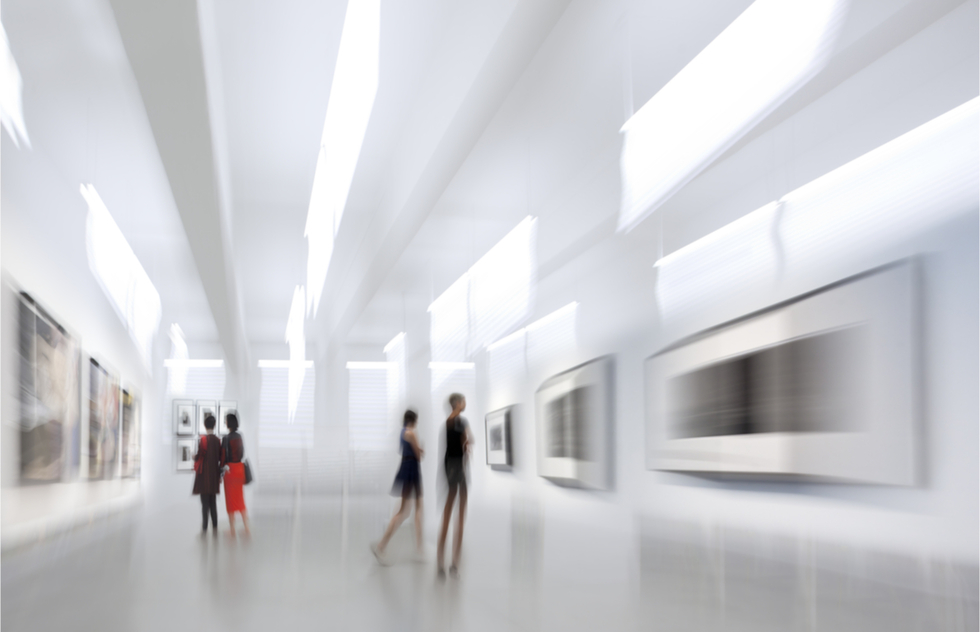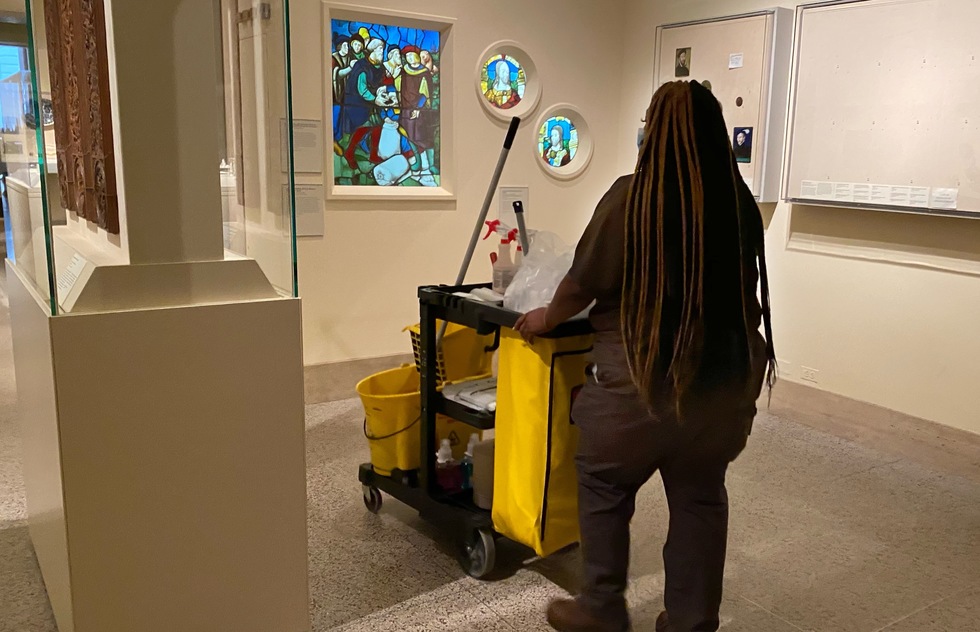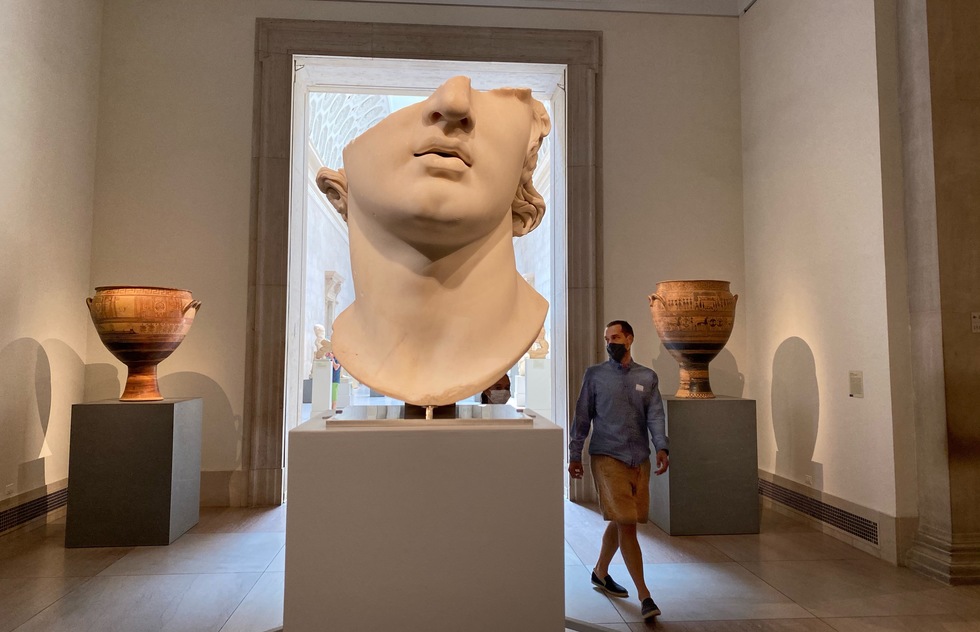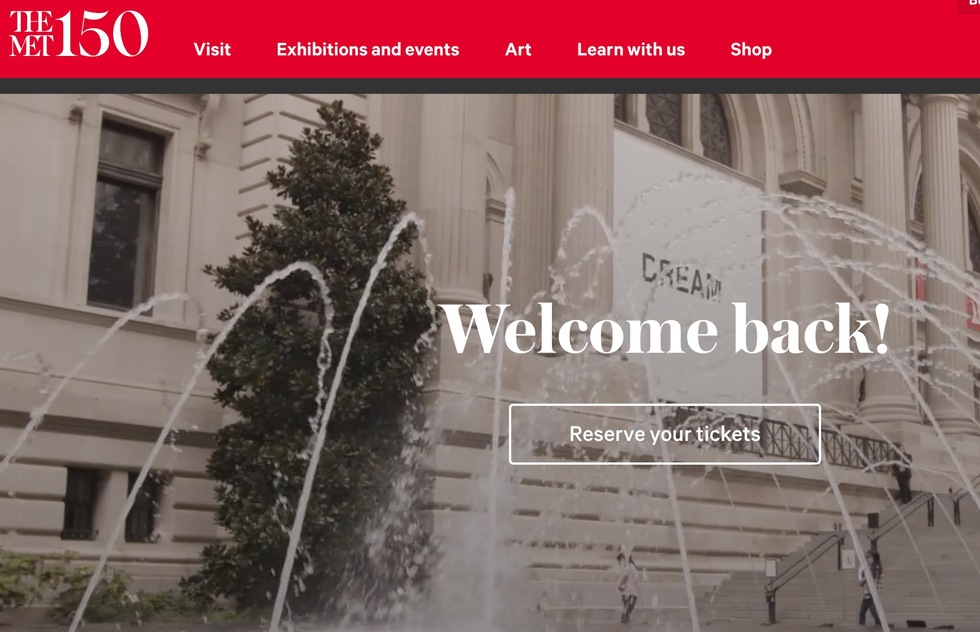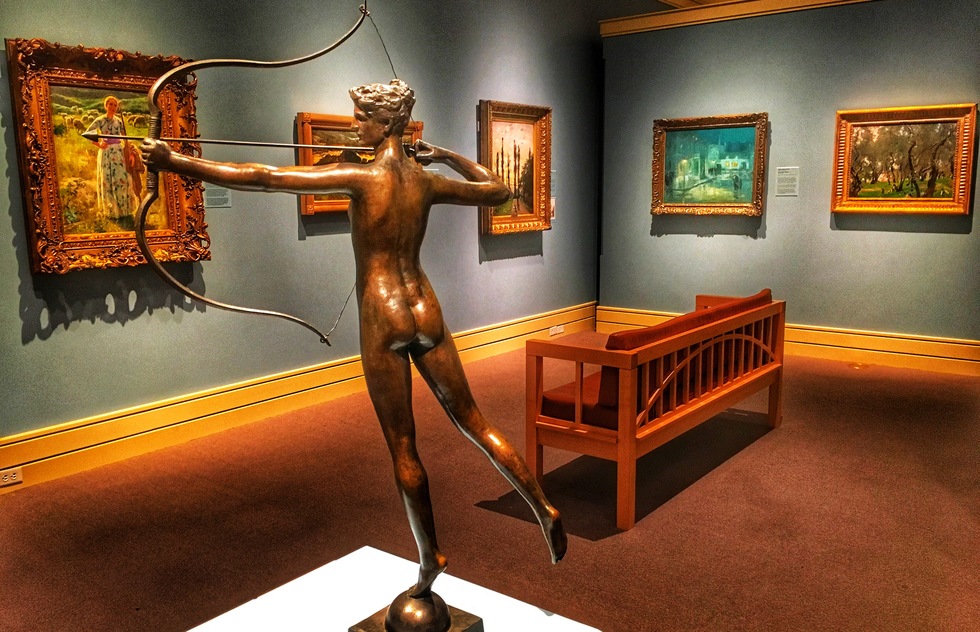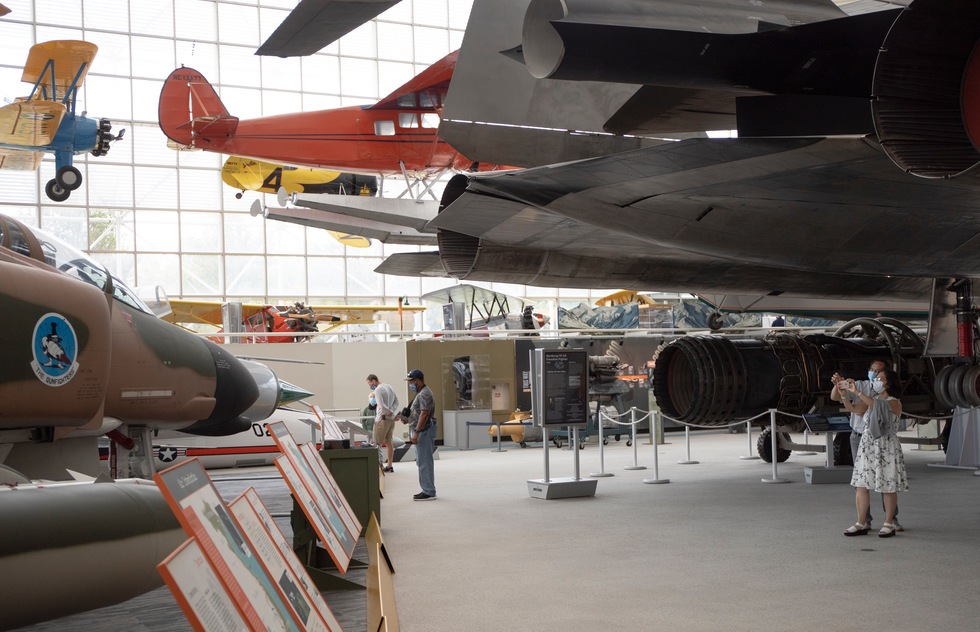Expert Advice on Visiting Museums During the Pandemic
By Pauline FrommerJust going to a museum now feels exotic…and potentially dangerous. To help culture fans navigate the new reality, I talked with the directors of major museums in Albuquerque, Seattle, and New York City about what visitors can expect from the experience and how these institutions are addressing safety issues.
The basic takeaway: Yes, the museum experience has radically changed. But not always for the worst.
Because of their commitment to keeping their holdings as spotless as possible, museums were in a better starting position, safety-wise, than most public indoor spaces.
"Museums are innately clean because they usually house original objects that have to be well taken care of," Andrew Connors, director of the Albuquerque Museum, told me. Top-notch air filtration systems and good sanitation and maintenance protocols were already in place before 2020, Connors pointed out, so the race to the finish line was relatively short.
That being said, big changes are underway at most museums that have opened or are about to do so. Matt Hayes, director of Seattle’s Museum of Flight, told me that his institution has added cleaning staff and shifted their working hours to the daytime so that sanitization can happen continuously. Like other facilities, the Museum of Flight has also invested in high-tech hygiene tools like ionizing wands and hospital-grade HVAC filtering systems to bring in air from the outside and circulate it efficiently. According to the Environmental Protection Agency, good ventilation is key to reducing the concentration of airborne contaminants, including viruses.
Pictured above: A member of the cleaning staff at the Metropolitan Museum of Art in New York City
Cutting down on touch points is also a big theme at museums. You’re more likely to see a Vermeer nude (art joke!) than a paper map, printed schedule of events, loaner audio-guide headsets, or any other type of object that would normally pass from hand to hand. All of those resources have migrated to museum apps and websites, with the expectation that visitors will use their smartphones as navigation tools.
That means it’s crucial to bring a fully charged phone with you to the museum. You might even consider bringing a charger for backup—your device will be getting a Rocky Balboa–level workout, especially if you stream or download an audio tour.
Pictured above: The now-empty information desk at New York's Metropolitan Museum of ArtInteractive exhibits with touch screens and audio stations are being shut off at many museums, as you can see in this photo of the Museum of the City of New York. That won’t dramatically affect the experience at art museums. But shrines to science, history, and pop culture tend to have these sorts of digital features woven deeply into the visitor experience. It might be worth your while to call in advance and find out what’s been disabled at museums of that sort. At Seattle's Museum of Flight, many touch-screen videos are being played on a loop for now so that visitors can still see the material. New York's Museum of the Moving Image, which plans to reopen soon, will do the same.
Sanitizing surfaces only goes so far when you’re dealing with an airborne illness. That's why mask wearing at museums is a must. All three directors I spoke with say their staff members have been trained to enforce rules relating to facial coverings. But the officials also noted that, so far, the vast majority of museumgoers haven’t needed much policing in this regard.
"Museums have a distinct advantage over other types of leisure opportunities, and one is the self-selection of people who determine that they’re going to go to a museum," says Carl Goodman, director of the Museum of the Moving Image. "We’ve found that museumgoers tend to be extremely responsible about the guidelines that museums must impose on visitors."
To aid with social distancing, the majority of museums across the United States are allowed to admit visitors only up to 25%–30% of capacity. To avoid going over the limit, museums are requiring timed tickets reserved in advance—though in some cases, there may be walk-up options. Even when the museum you want to visit doesn't charge an admission fee, you may be required to reserve a free timed ticket for entry. Check the museum's website or call ahead to find what the requirements are.
You may need to have some flexibility when it comes to dates and times in case your preferred slot is full. In my own experience, I was easily able to secure reservations the day before my visits to various New York City museums.
Interestingly, for some facilities that are open to tours only, the more people you bring—up to a certain number—the more you can get in. Along with being director of the Albuquerque Museum, Andrew Connors also heads Casa San Ysidro, a historic house museum in Corrales, New Mexico, that can only be seen via guided tour. Under current rules, each single visitor who reserves a spot gets a solo tour. But if a family of five reserves the next space, they get to do the tour together. "We’re allowed gatherings of up to 10 people," says Connors. "But we won’t be combining people from non-previously arranged groups."
The unsung perk of museums capping attendance is that visitors often have galleries to themselves—as in this photo taken at Newfields, home of what used to be known as the Indianapolis Museum of Art in Indiana's capital city.
"The quieter and more contemplative the environment, the more engaging and deep the experience will be for the individual," says Connors of the Albuquerque Museum. "That’s one of the reasons why going to museums is so rewarding right now."
In order to accommodate more visitors, many museums are staying open for longer periods during the day, with more evening hours—a boon for visitors with 9-to-5 jobs.
Because of insurance issues, the volunteers who usually act as tour guides and docents in many museums have been furloughed during the pandemic. At the Museum of Flight (pictured above) in Seattle, that means permanent staffers are now working the floors, answering questions about exhibits they helped put together.
“You can run into some really interesting experts,” says Hayes, the facility's director. “You can ask, 'How did you hang that aircraft? That thing must weigh 3 tons.' And the curator will be like, ‘No, that weighs 6 tons!'" And then you have an opening to get the kind of behind-the-scenes info a volunteer docent wouldn't know.
For me, the most notable difference in museums right now is how glad patrons and staffers alike seem to be about the reopenings.
“You have staff who are just so happy to be back,” said Goodman of the Museum of the Moving Image, discussing his recent visits to other New York institutions. “Not just because of the paycheck, but because of the human interactions, the love of the work. The smiles I saw from museumgoers, even those waiting in line to get into the Met, were ones I haven’t seen in a long time.” (Let's hope he means they were smiling with their eyes, because those waiting in line really should be wearing masks.)
If you don't feel comfortable going to a museum in person right now, you can still get a taste of the experience online. While temporarily shut down, many cultural organizations really upped their web game, putting a number of lectures, gallery tours, videos, and other resources online. In the case of the Museum of the Moving Image, Goodman says you can even hire a GoPro-equipped curator to walk you through exhibits, supplying video and audio commentary. Goodman calls this a “wacky experience, kind of like something out of a Philip K. Dick novel."
Be sure to visit the websites of any museums that interest you. You might find something as entertaining as the online conversation among Muppet experts (pictured above) sponsored by the Museum of the Moving Image to coincide with a Jim Henson exhibit.
In July 2020, the American Alliance of Museums (AAM) polled more than 750 directors and found that 33% felt there was a "significant risk" that their institutions would close permanently. "There's a large public perception that museums rely on government support, when the reality is they get only a quarter of their funding from the government," AAM President Laura Lott told NPR. Primary sources of funding such as ticket and gift shop sales, school trips, and special events mostly "went to zero overnight when [museums] were all shuttered," she said.
If you can afford to help, consider joining a museum or renewing your membership early. Also: "Take suggested donations very seriously," advises Goodman. "They will be well spent. It’s meaningful, even if it’s a small amount."
But even if you can’t offer monetary support, there are ways to help. Call up your local museum and see what's needed—tech support, landscaping assistance, or some other volunteer service.
Whatever you give will be returned many times over. As Goodman told me, “Museums are places for contemplation and community, especially during very tough times. They have an extremely important role to play right now.” Connors of the Albuquerque Museum echoed that sentiment: "Museums stretch the imagination and allow visitors to engage in the type of civic discourse that makes our communities communities."
Pictured above: Art Institute of Chicago





